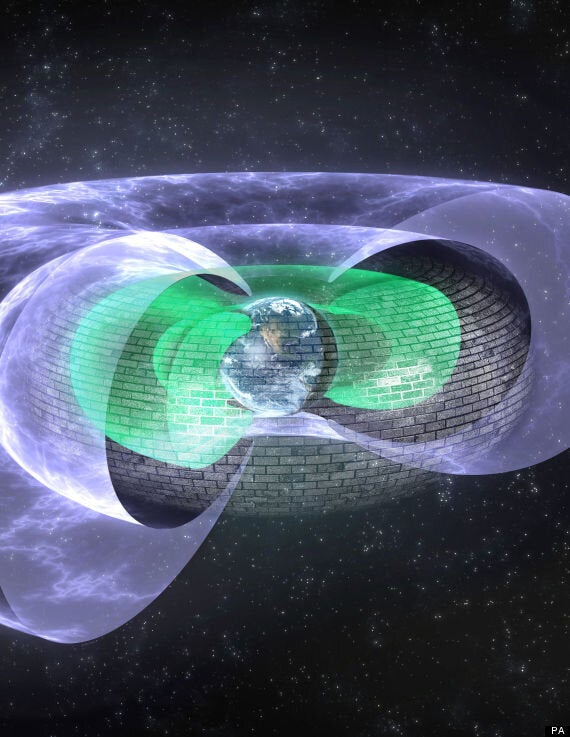The Earth is encased in an invisible force field that scientists have compared with the "shields" featured in iconic TV show Star Trek. An American team discovered the barrier, some 7,200 miles above the Earth's surface, that blocks high energy electrons threatening astronauts and satellites.
Scientists identified an "extremely sharp" boundary within the Van Allen radiation belts, two large doughnut-shaped rings held in place by the Earth's magnetic field that are filled with fast-moving particles (see graphic below). Lead researcher Professor Daniel Baker, from the University of Colorado at Boulder, said: "It's almost like these electrons are running into a glass wall in space.

Artists impression of a doughnut-shaped brick wall to illustrate an invisible "shield" discovered US scientists that is 7,200 miles above the Earth in the Van Allen radiation belts, which blocks high energy electrons that threaten astronauts and satellites
"Somewhat like the shields created by force fields on Star Trek that were used to repel alien weapons, we are seeing an invisible shield blocking these electrons. It's an extremely puzzling phenomenon."
The team originally thought the highly charged electrons, which loop around the Earth at more than 100,000 miles per second, would slowly drift downward into the upper atmosphere. But a pair of probes launched in 2012 to investigate the Van Allen belts showed that the electrons are stopped in their tracks before they get that far.
The nature of the force field remains an unsolved mystery. It does not appear to be linked to magnetic field lines or human-generated radio signals, and scientists are not convinced that a cloud of cold electrically charged gas called the plasmasphere that stretches thousands of miles into the outer Van Allen belt can fully explain the phenomenon either.
Things we thought in the past were true simply are not correct," Baker said. "It is for this reason that I cite the great American philosopher Yogi Berra, who said, 'You can observe a lot just by looking.' Our new instruments allow us to look in ways we never could before."
Baker added: "I think the key here is to keep observing the region in exquisite detail, which we can do because of the powerful instruments on the Van Allen probes." The research is reported in the journal Nature.